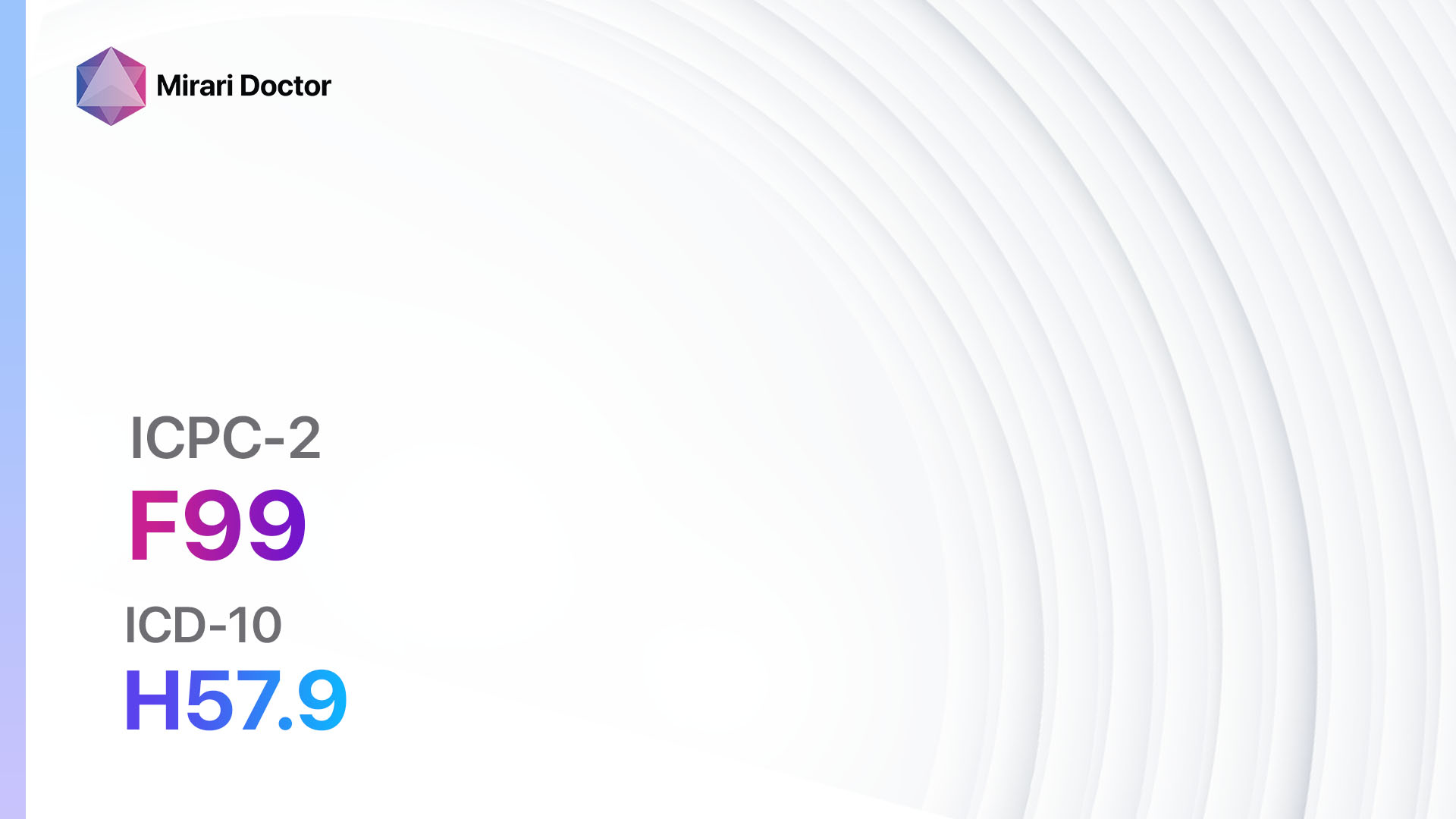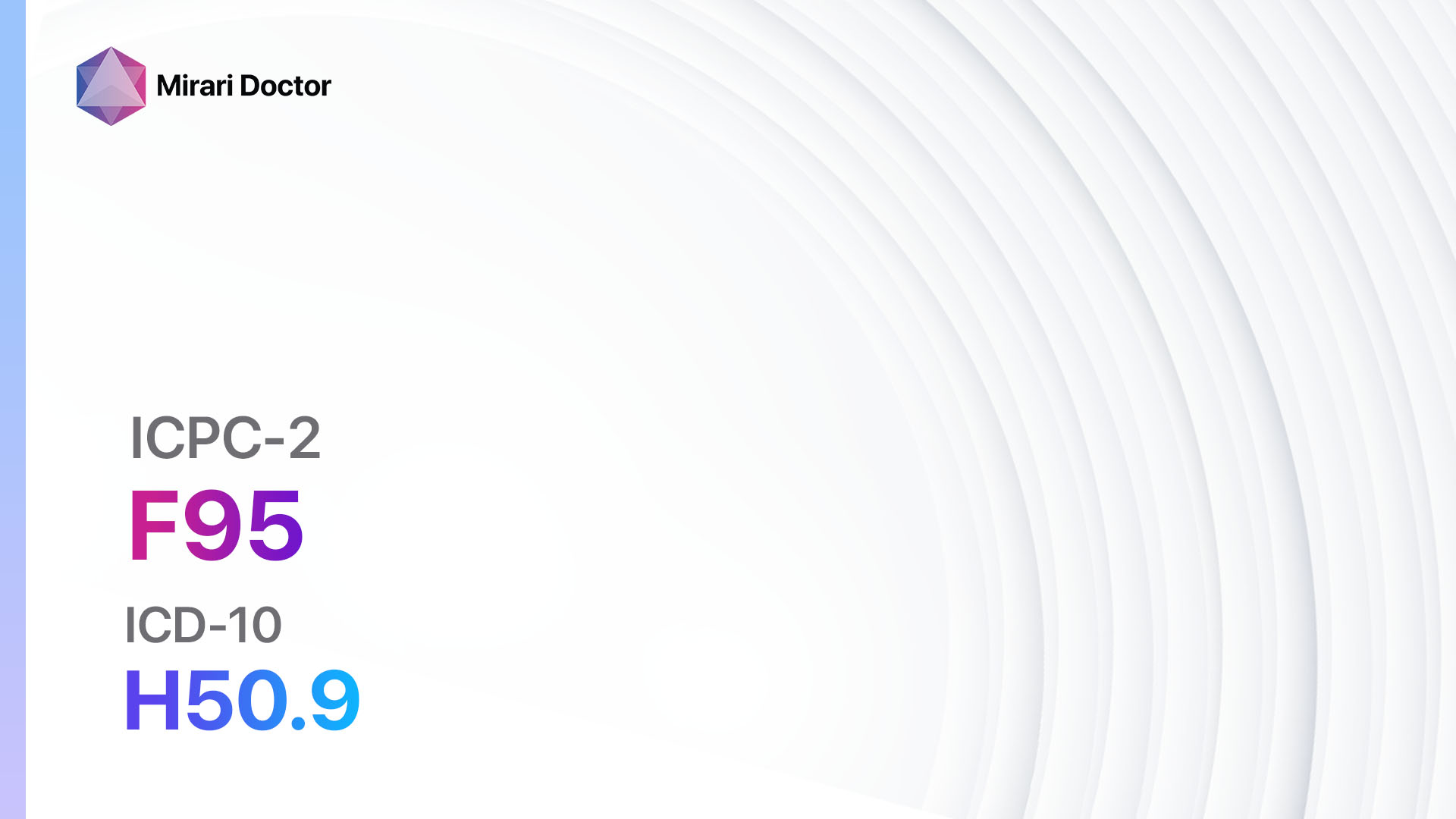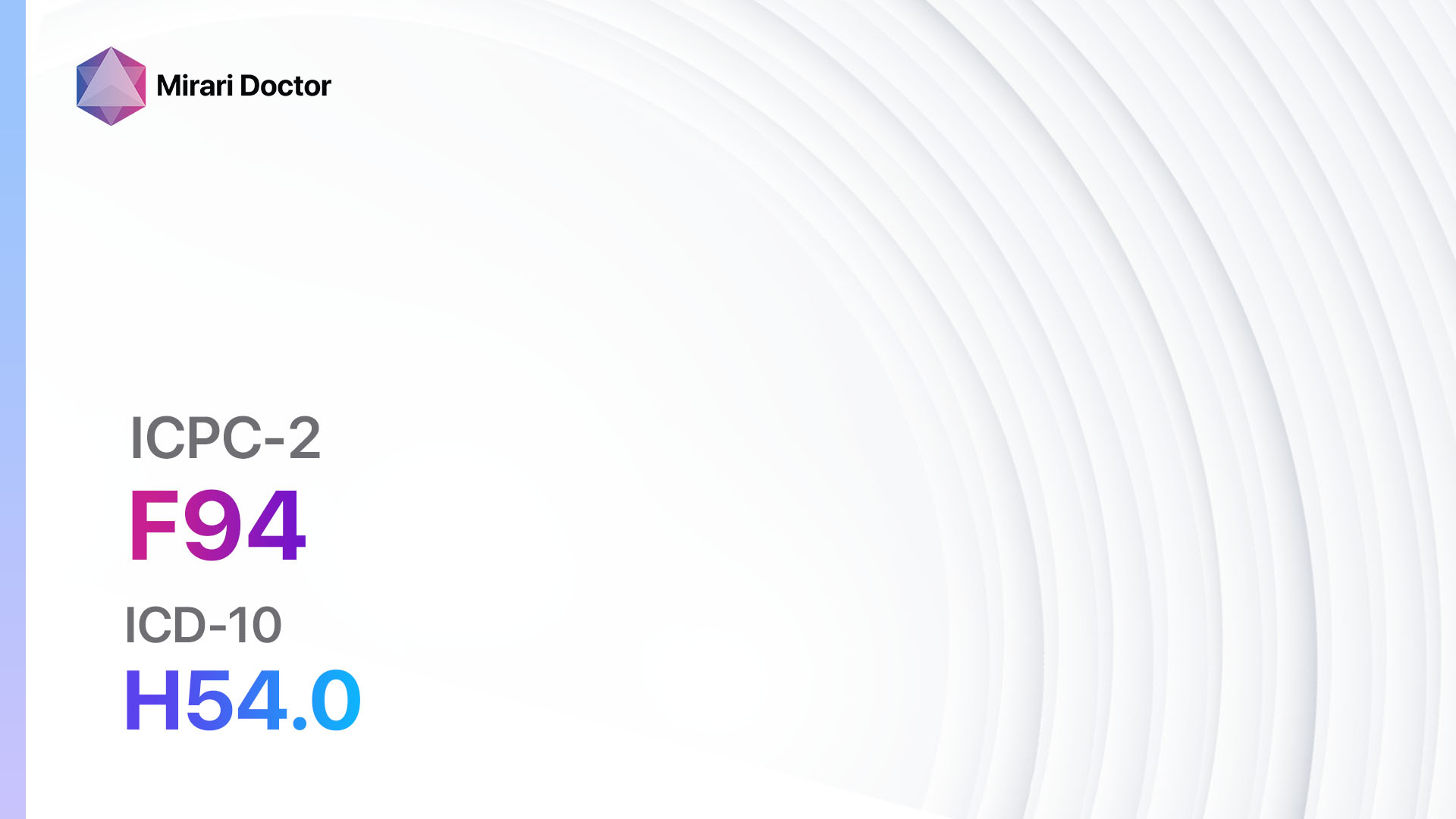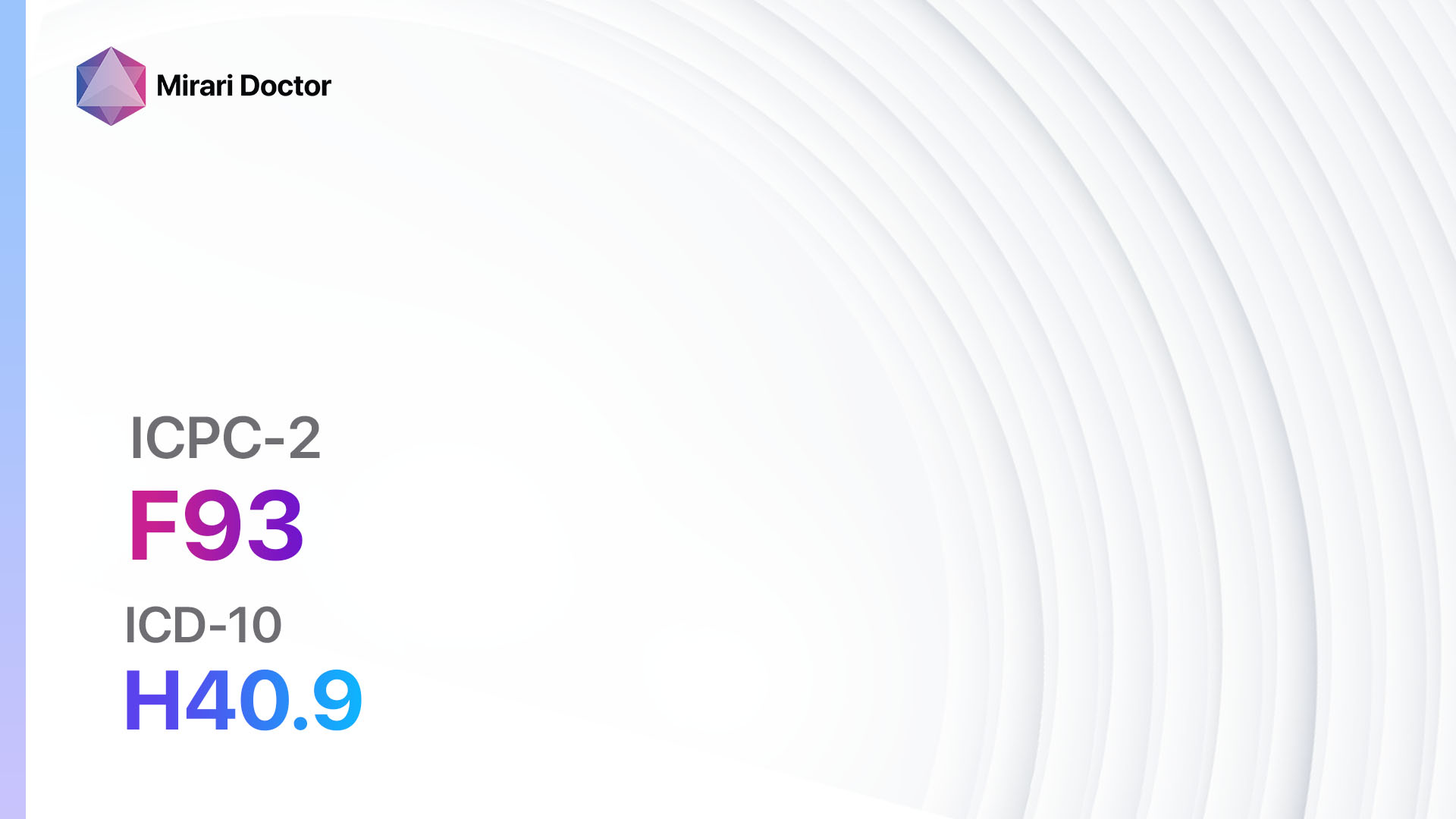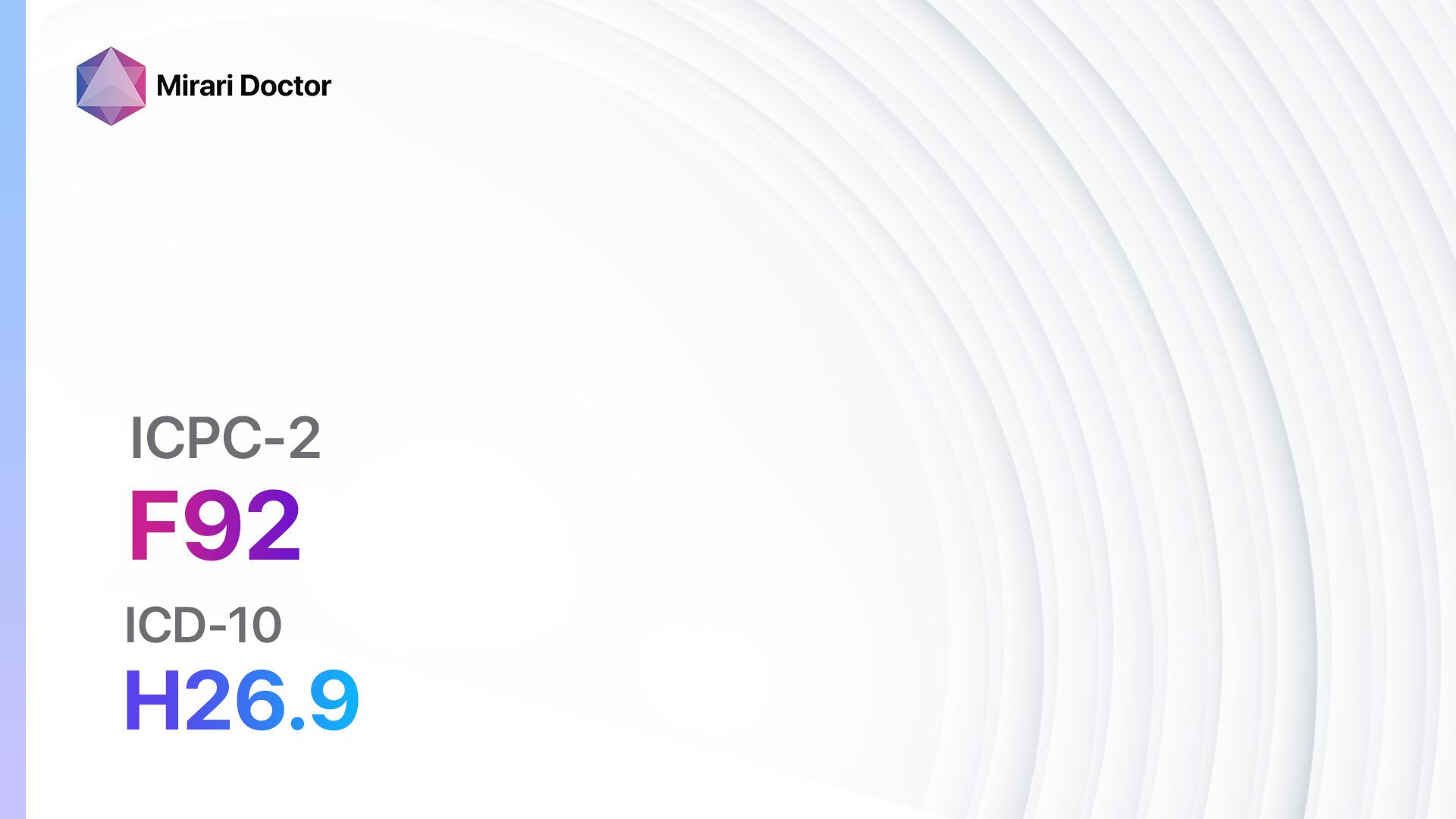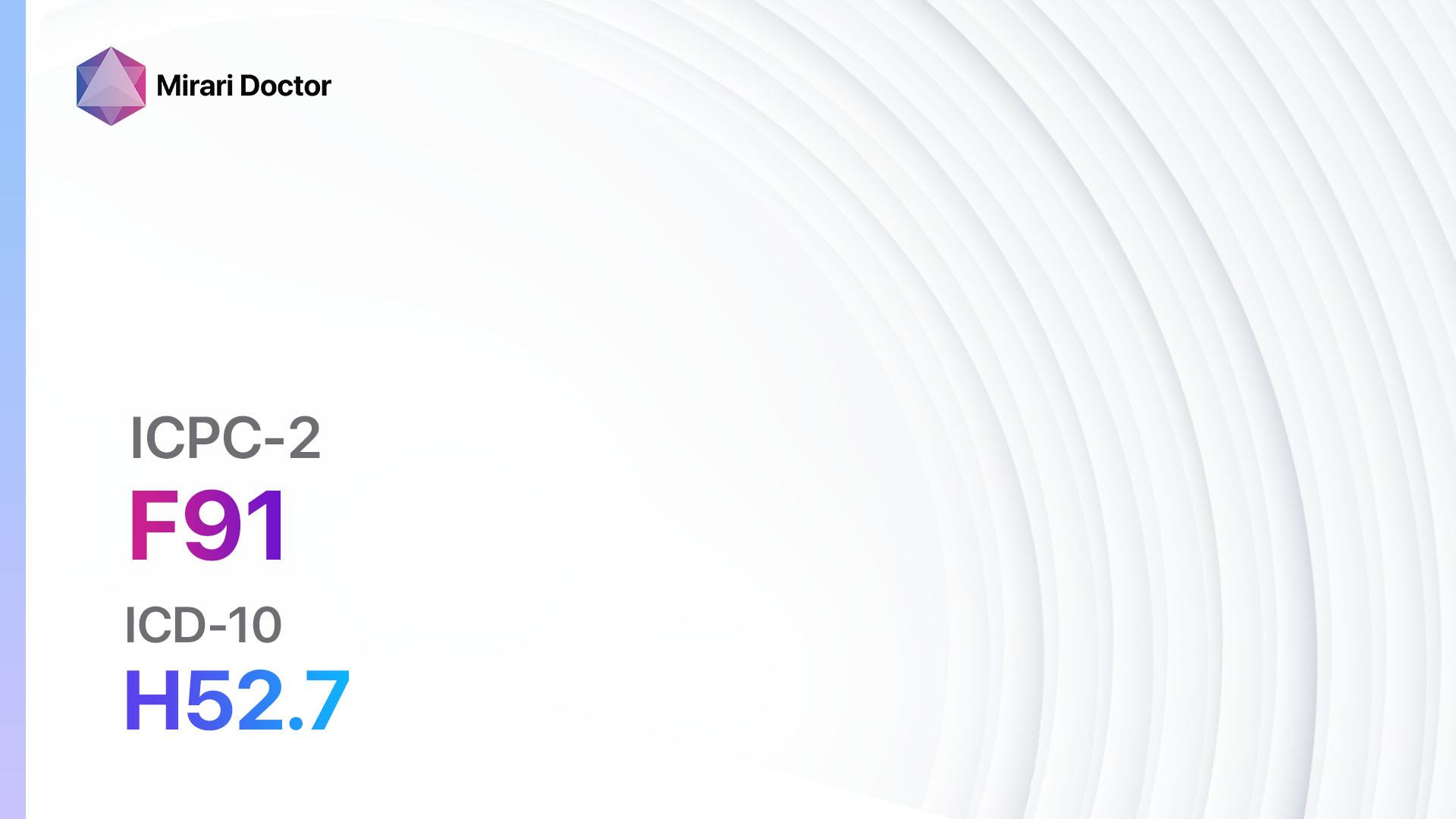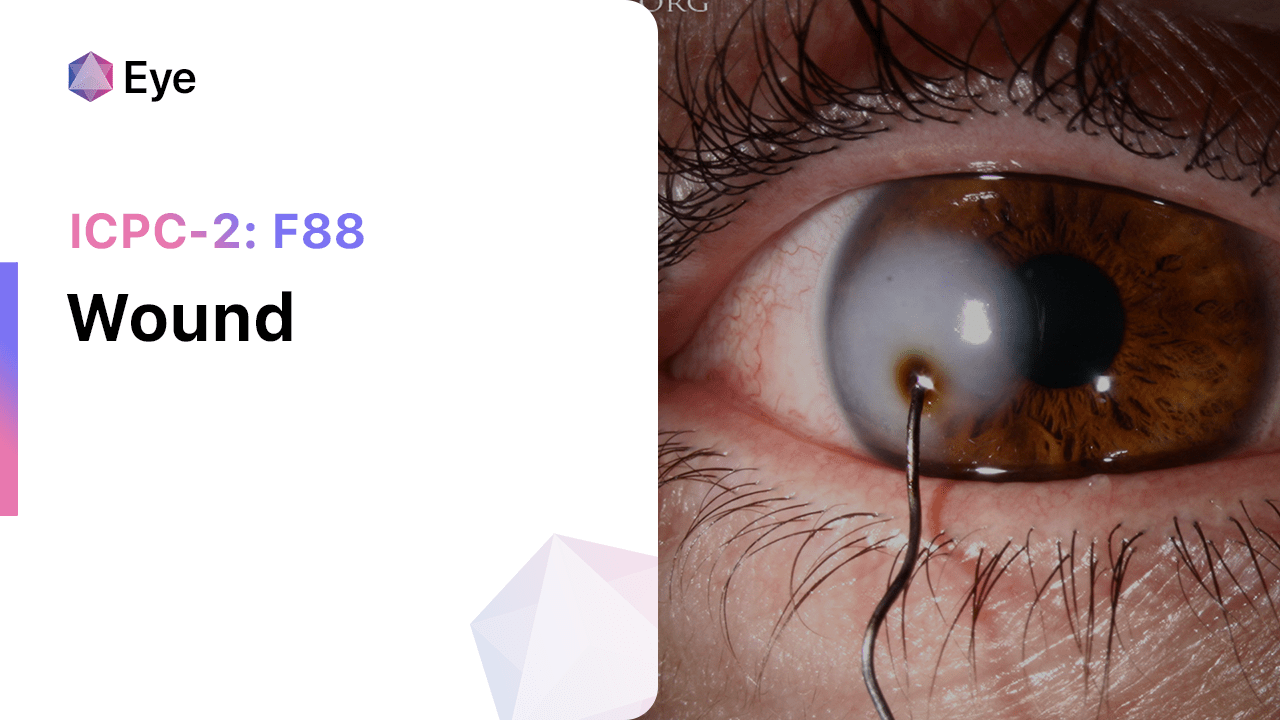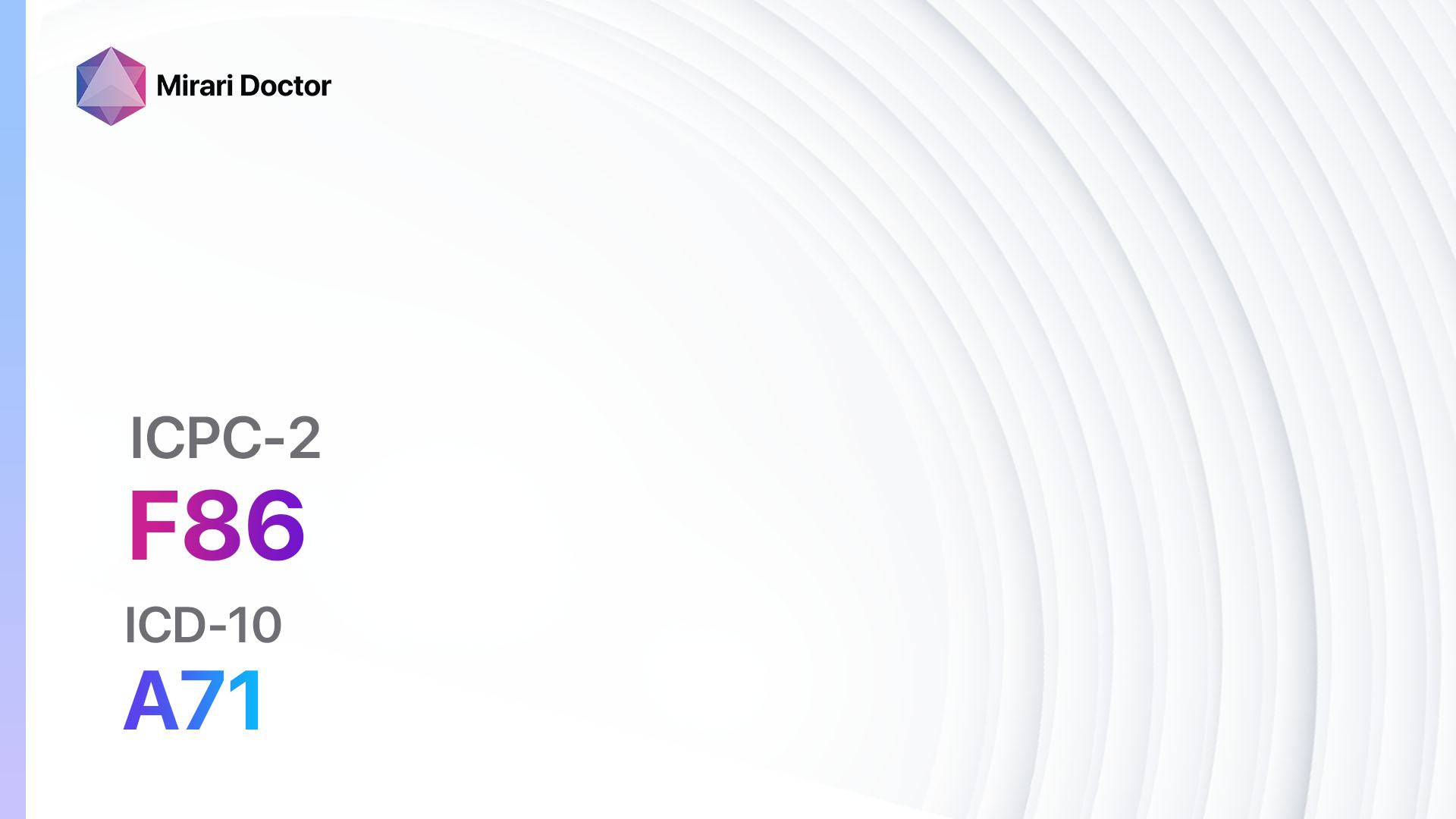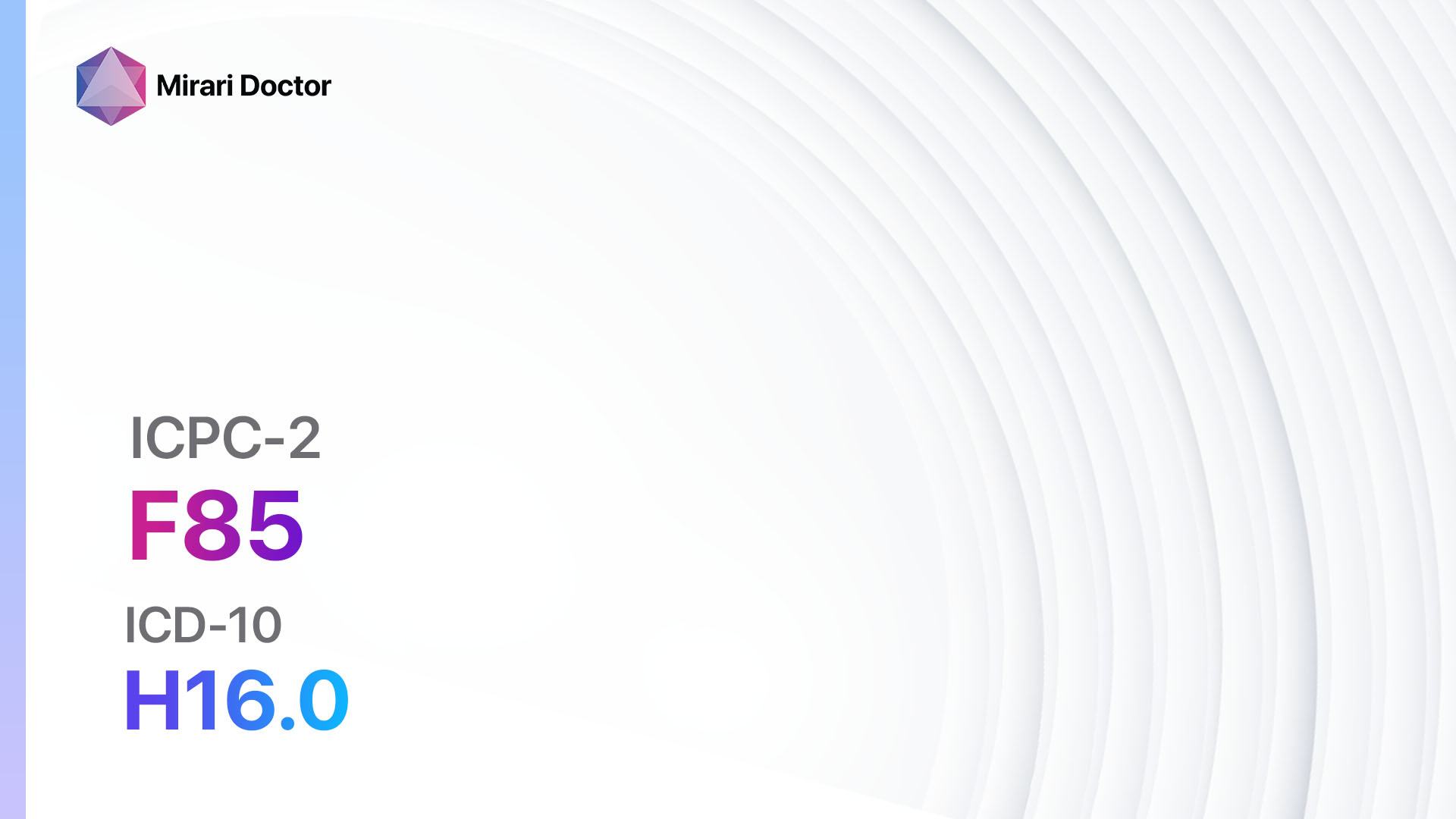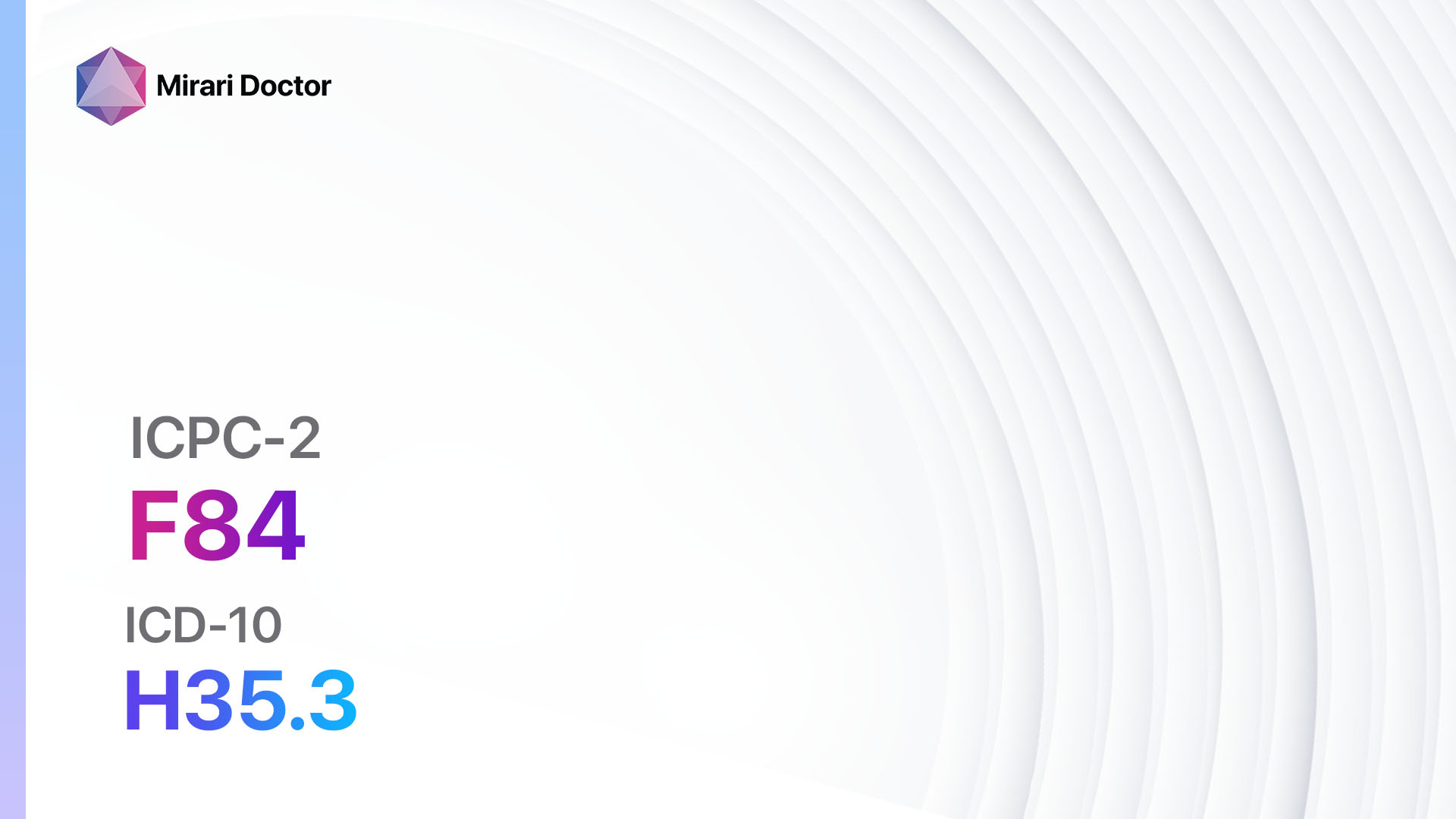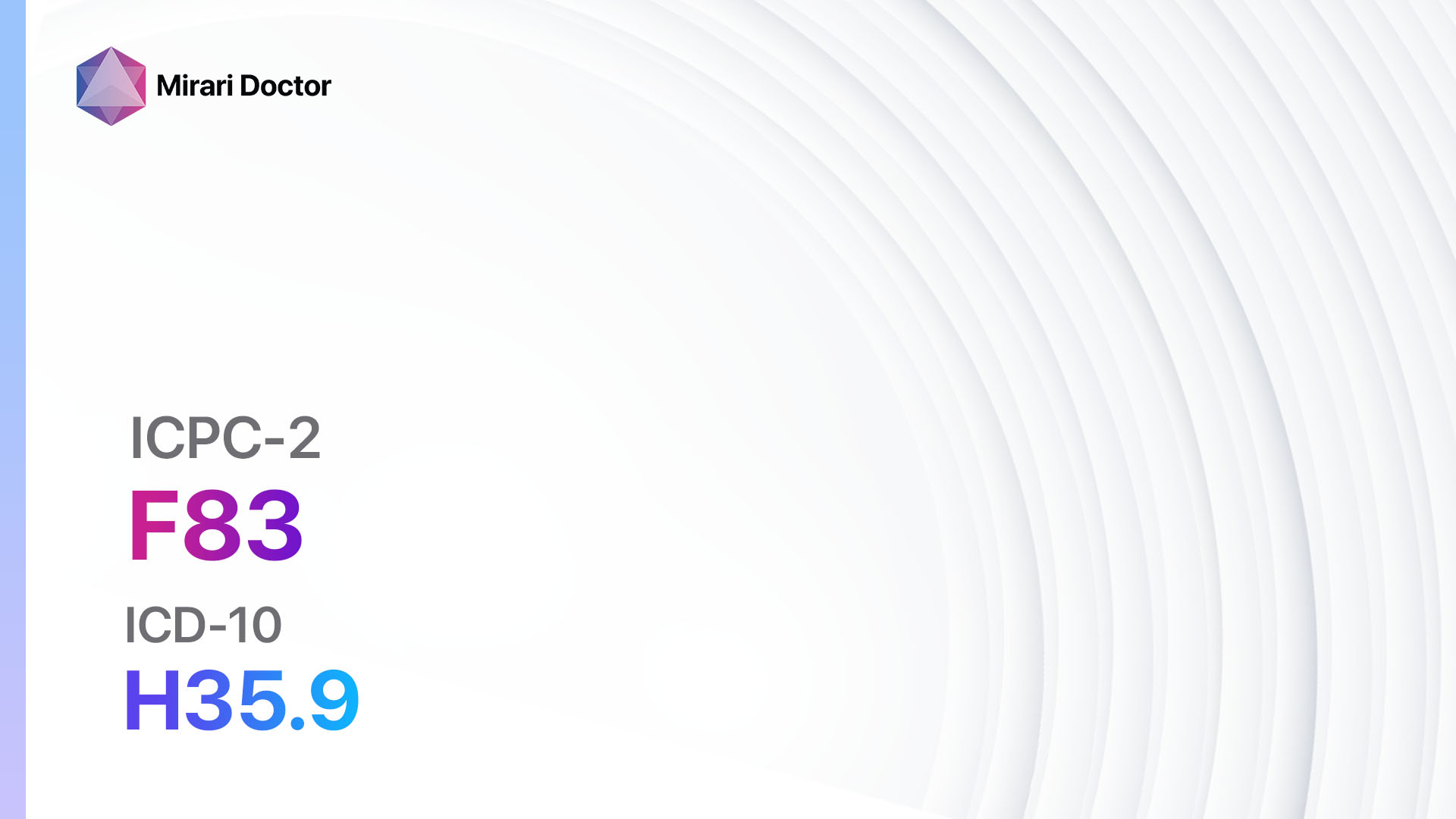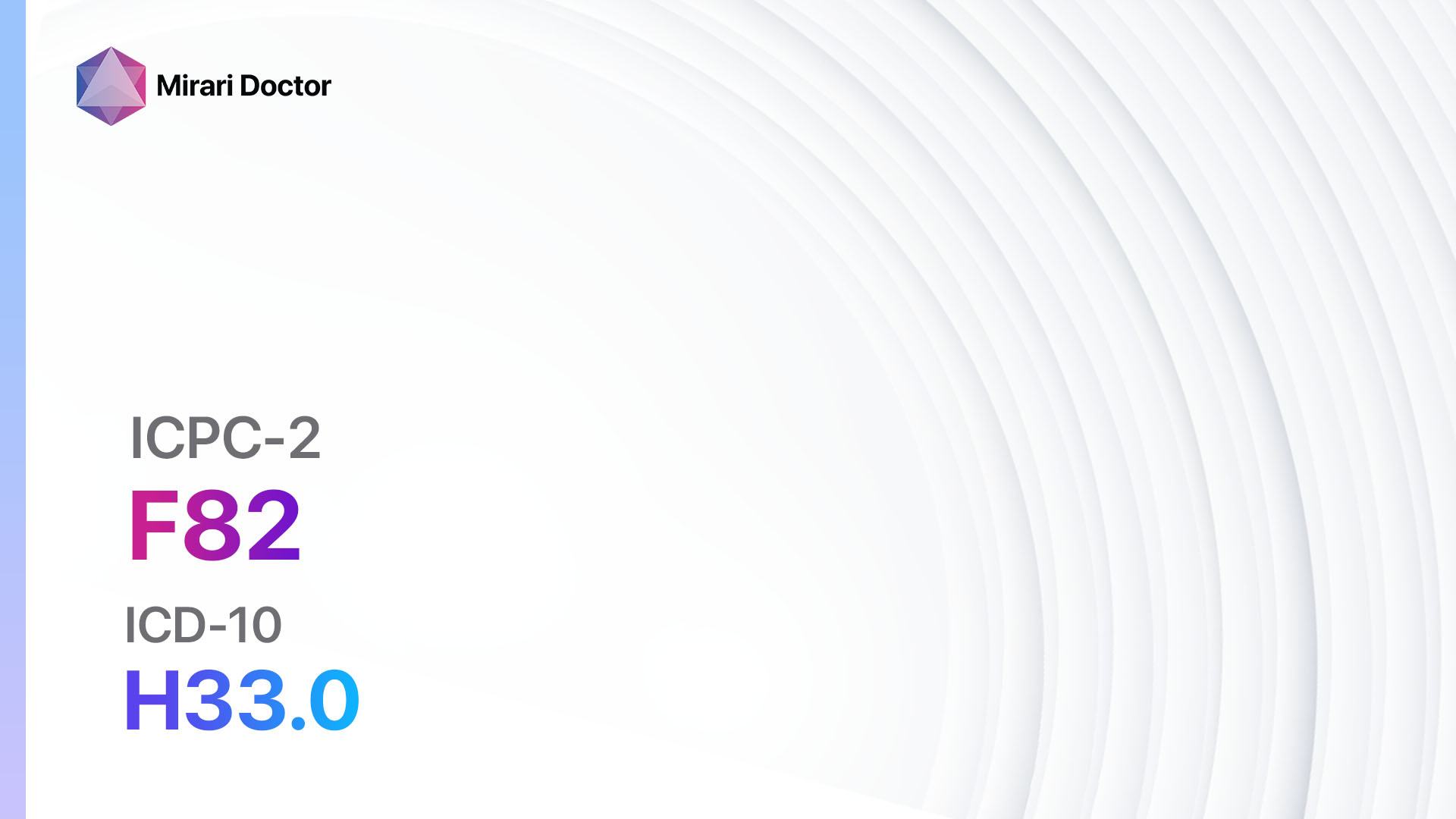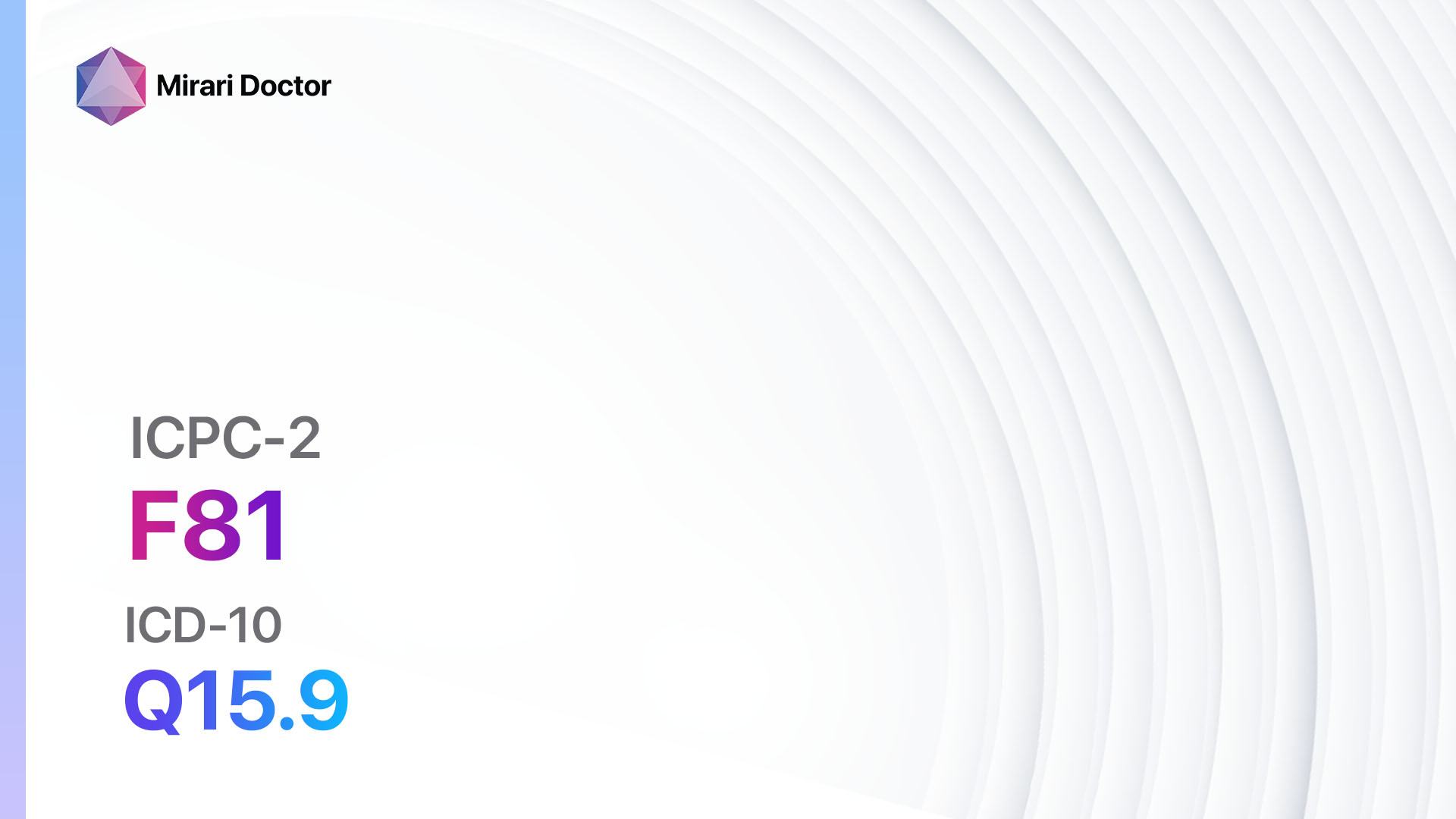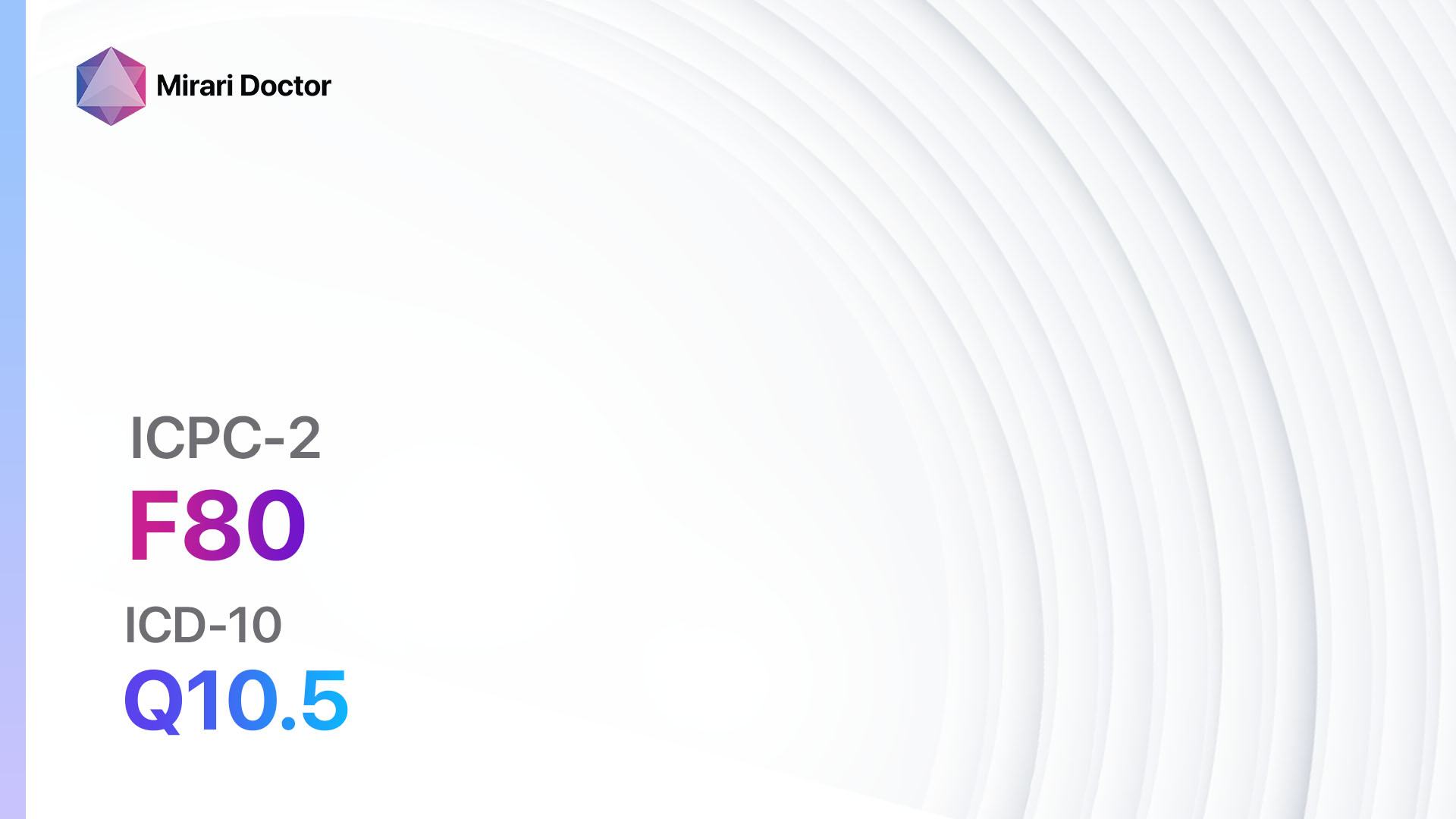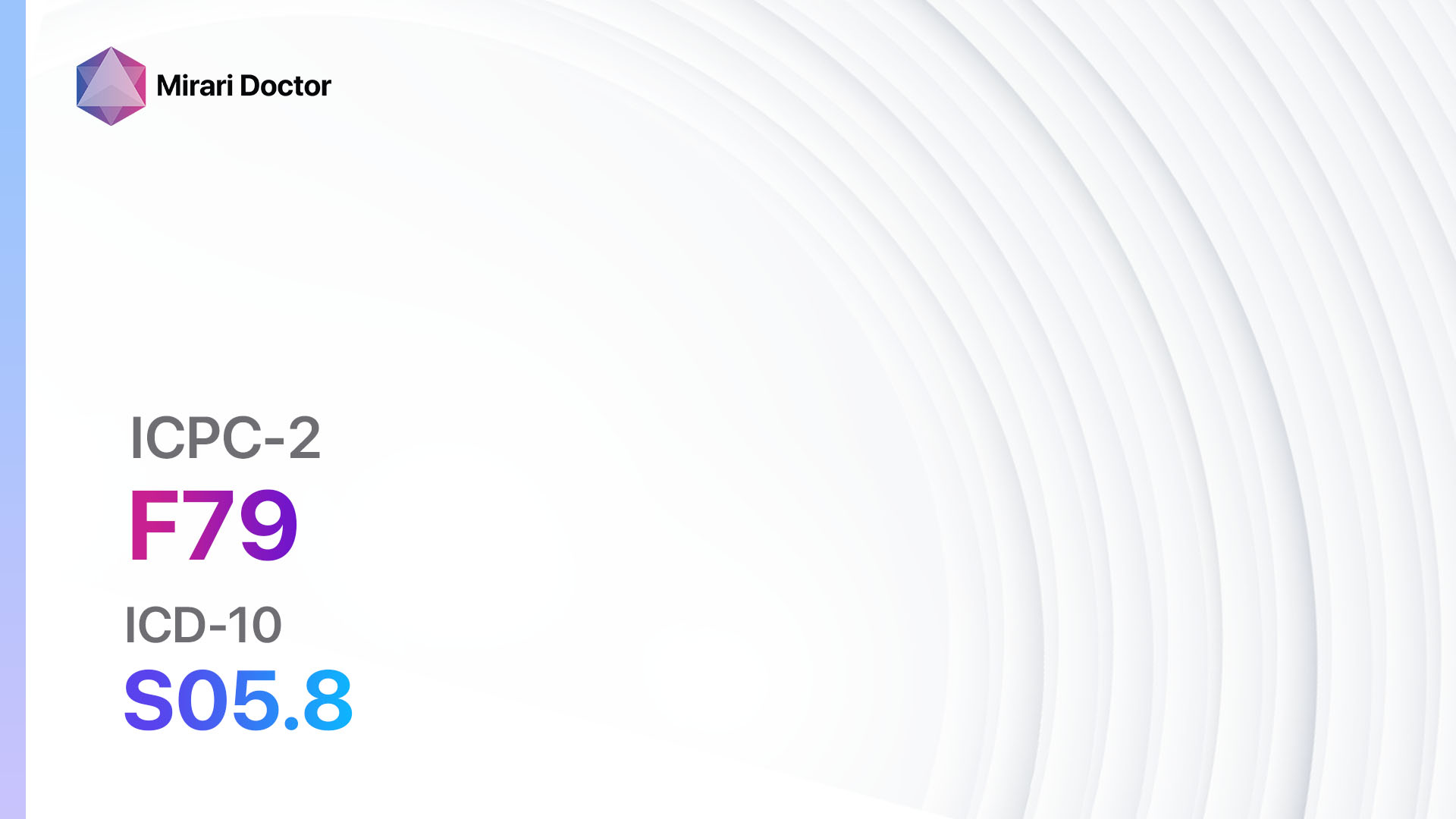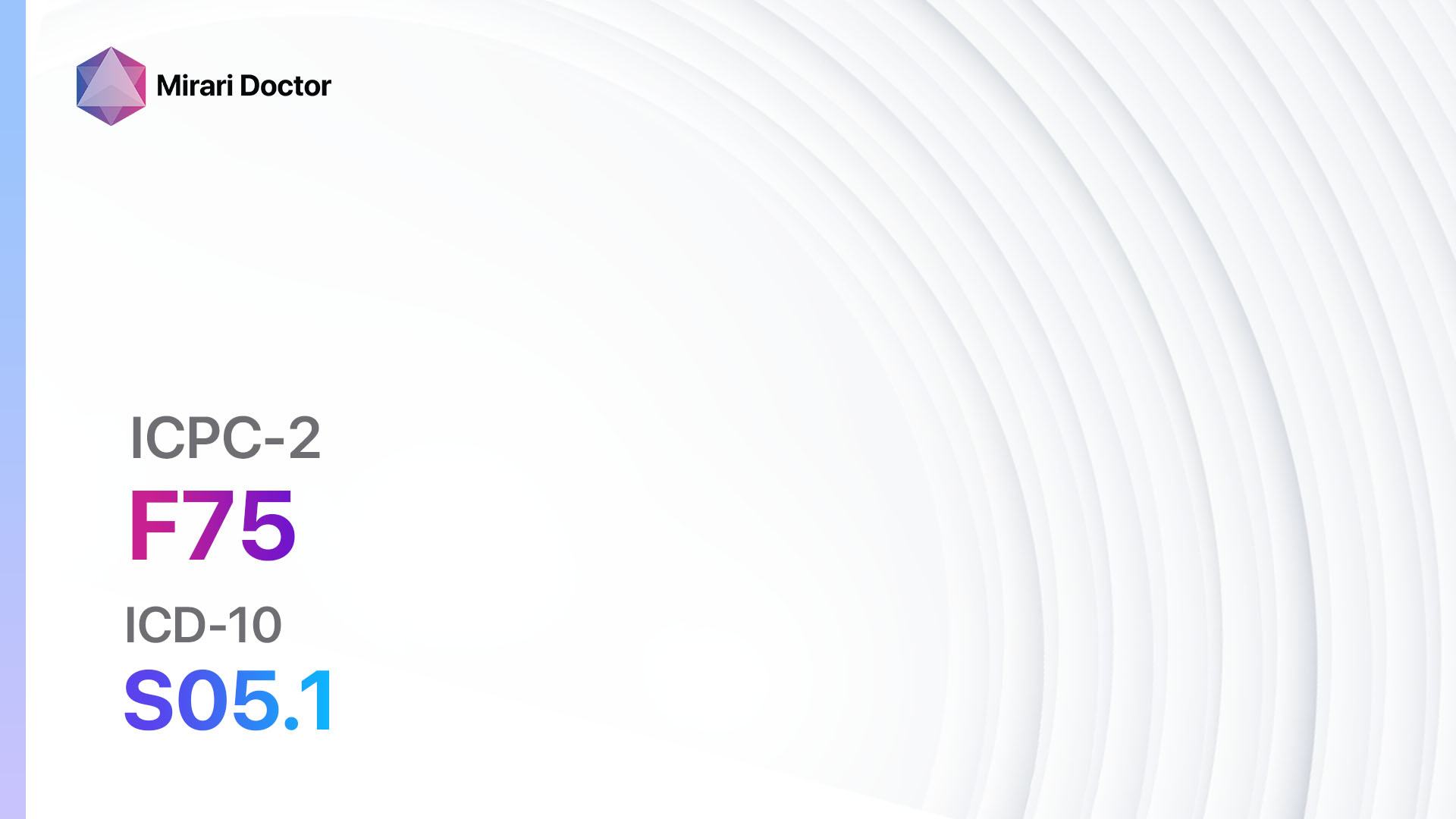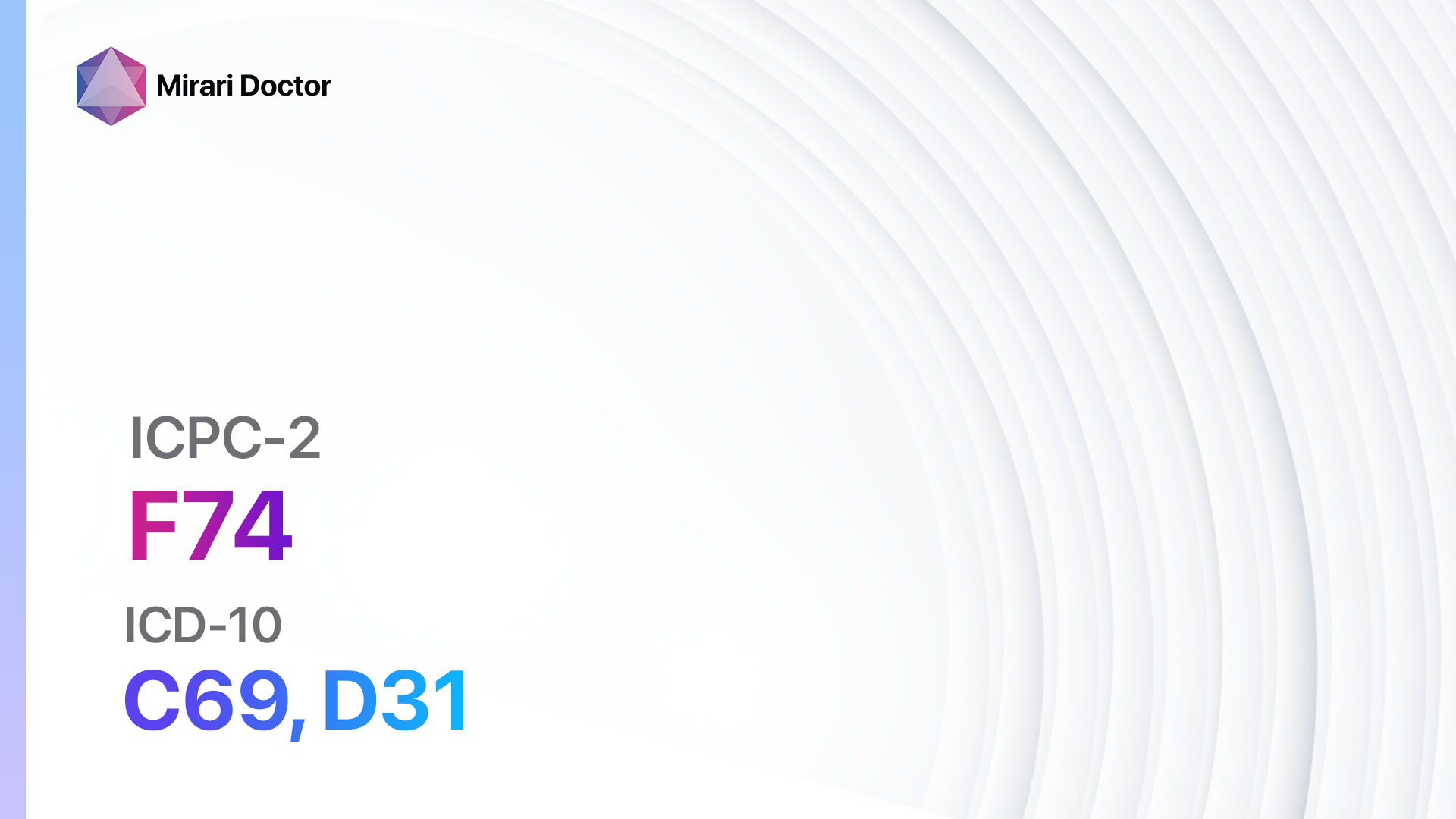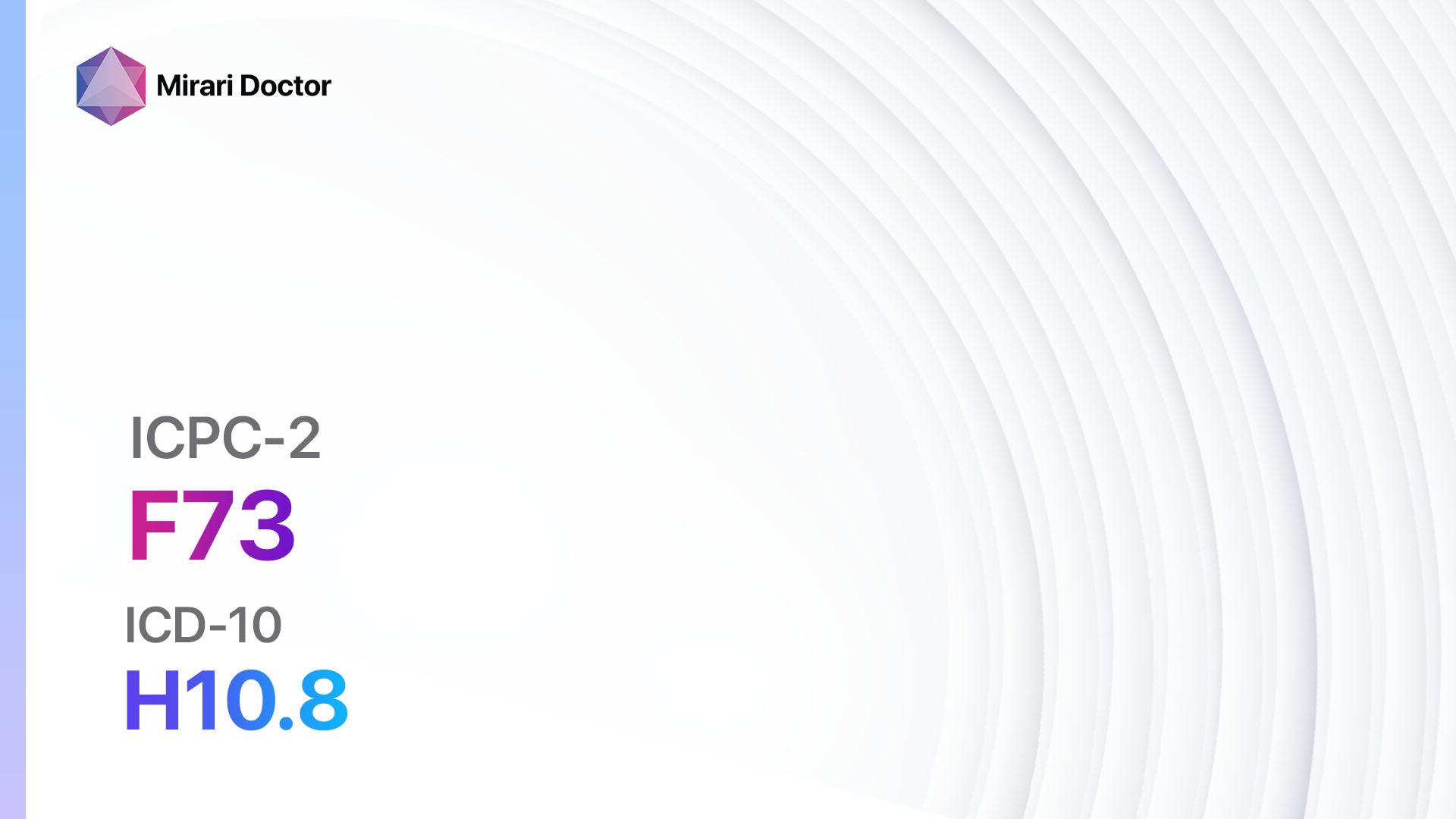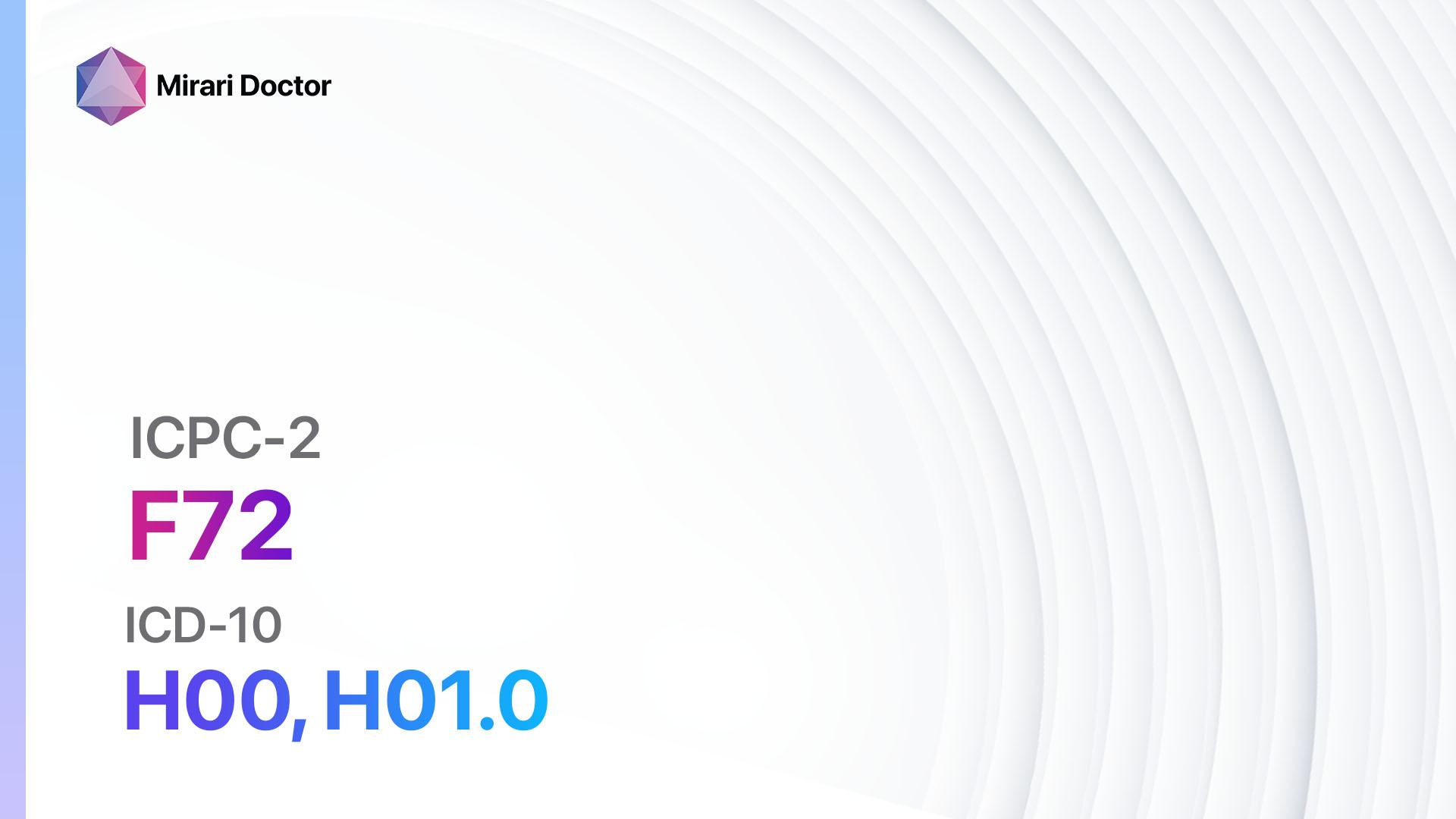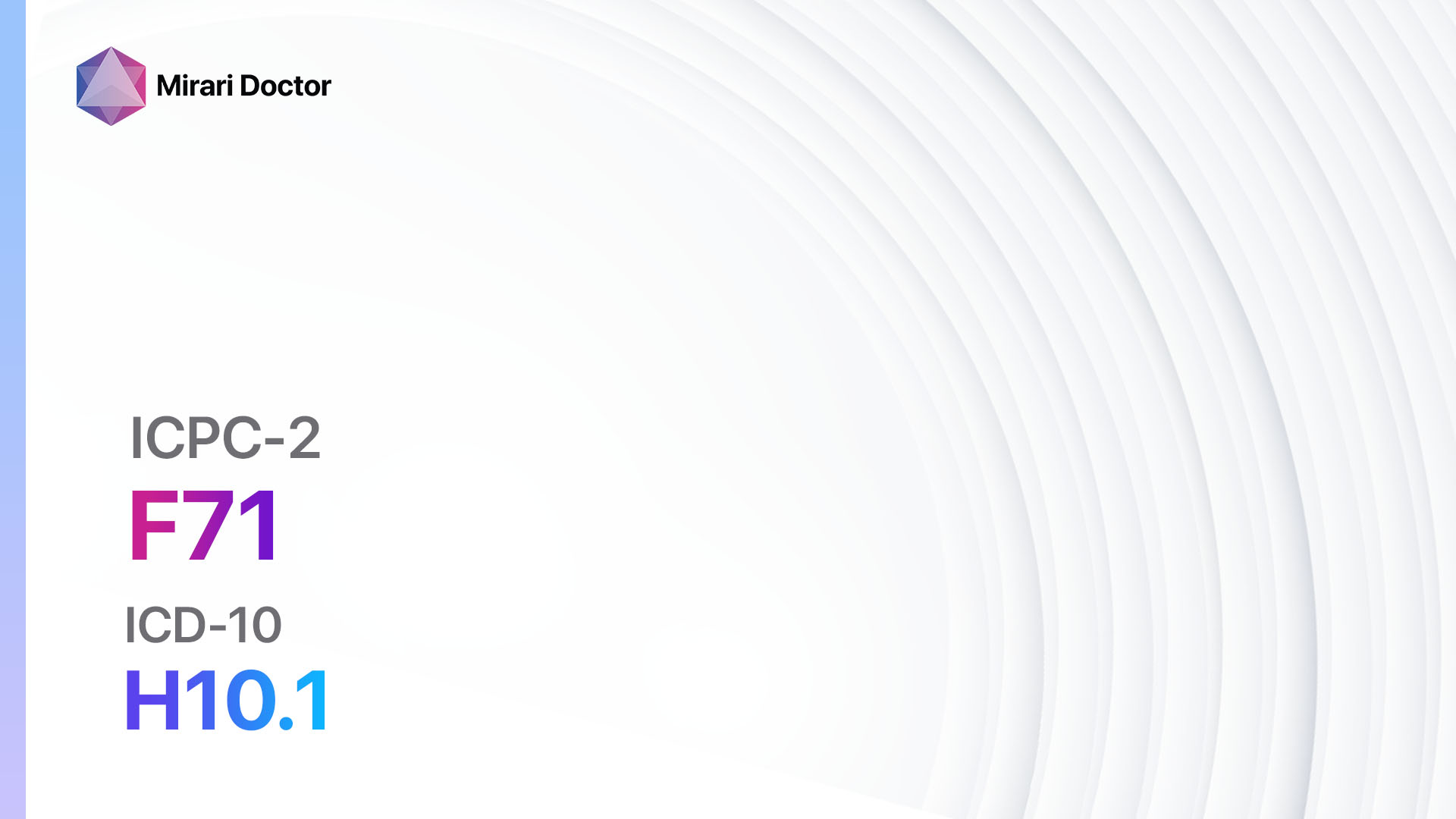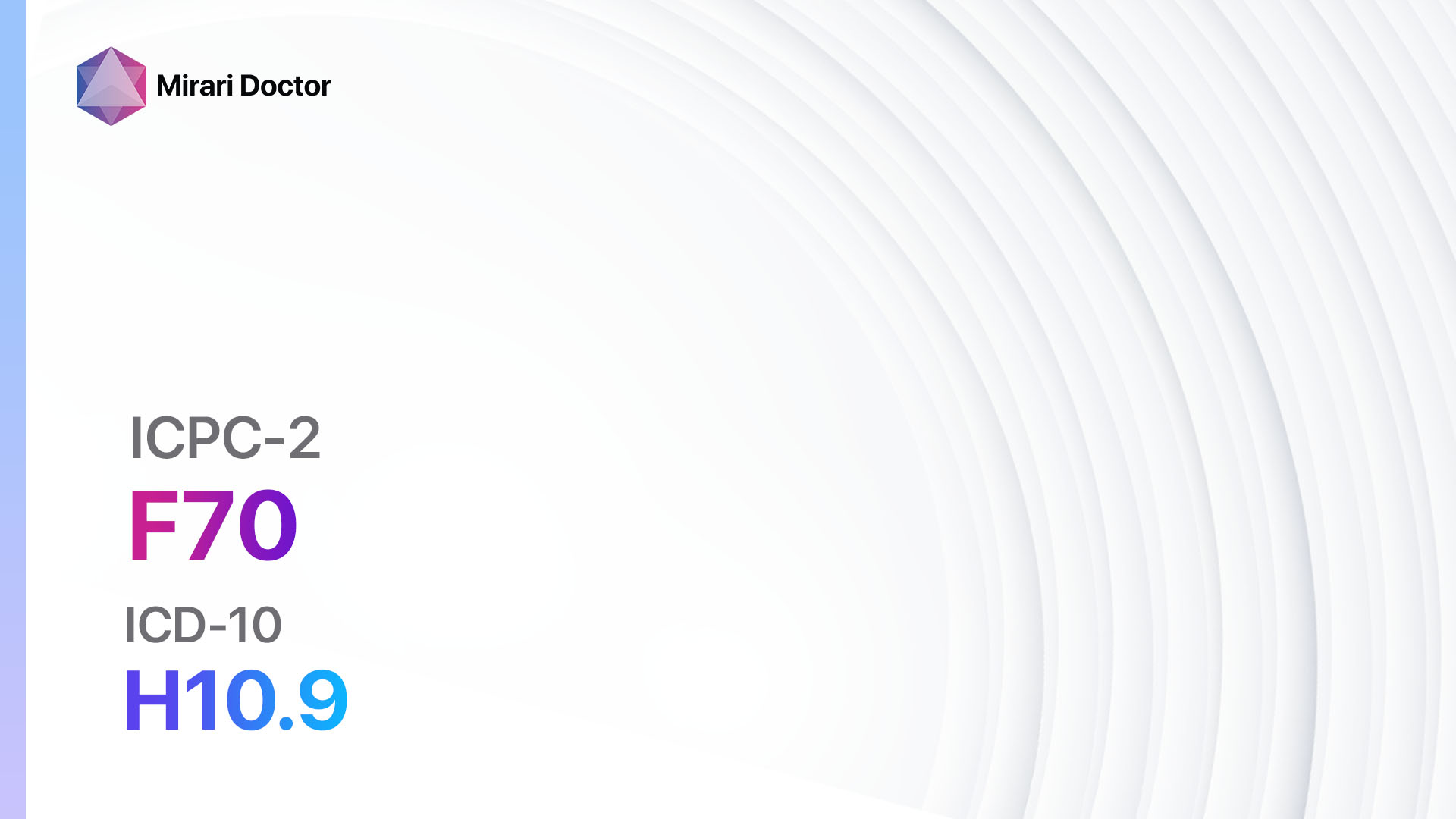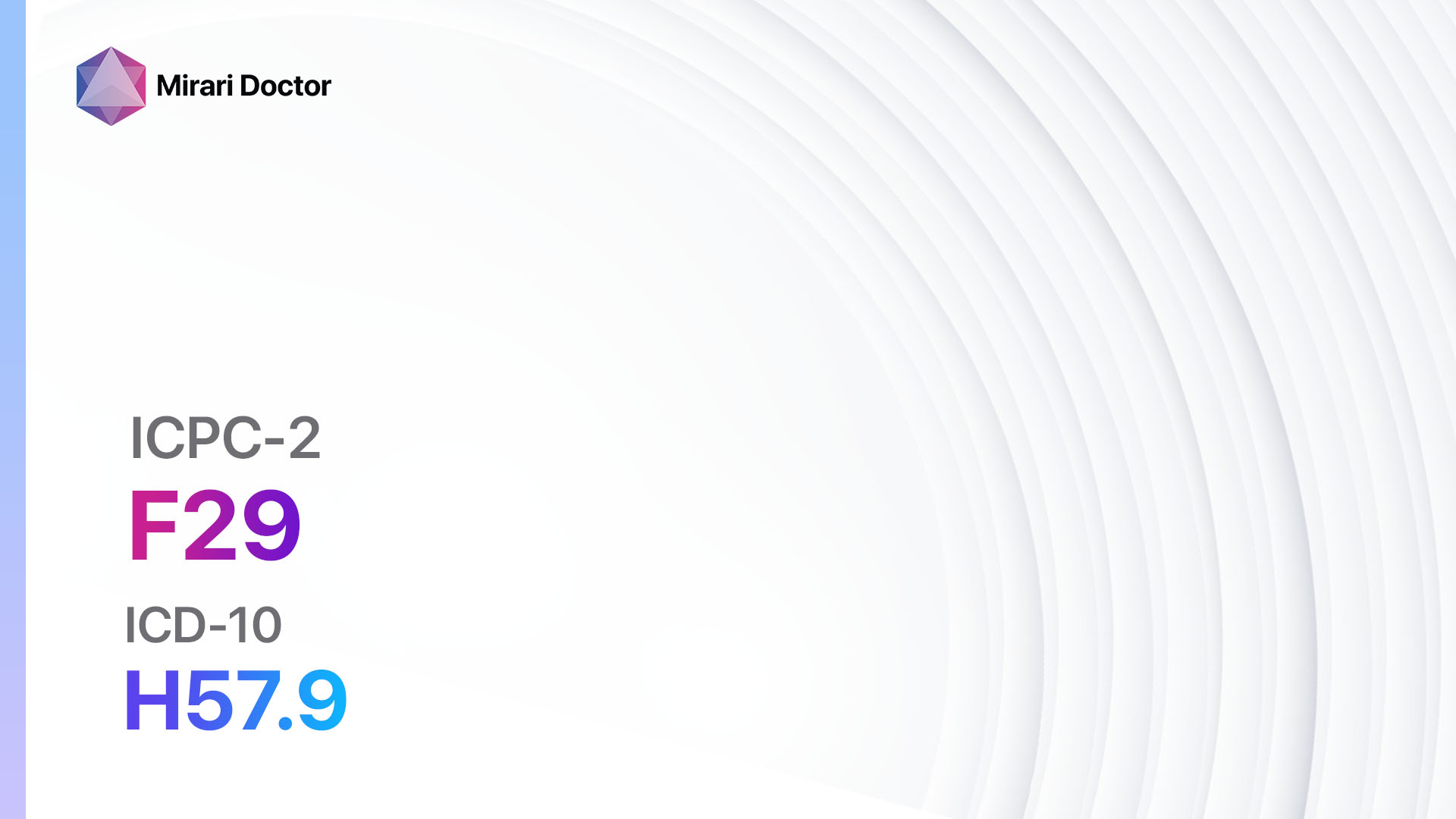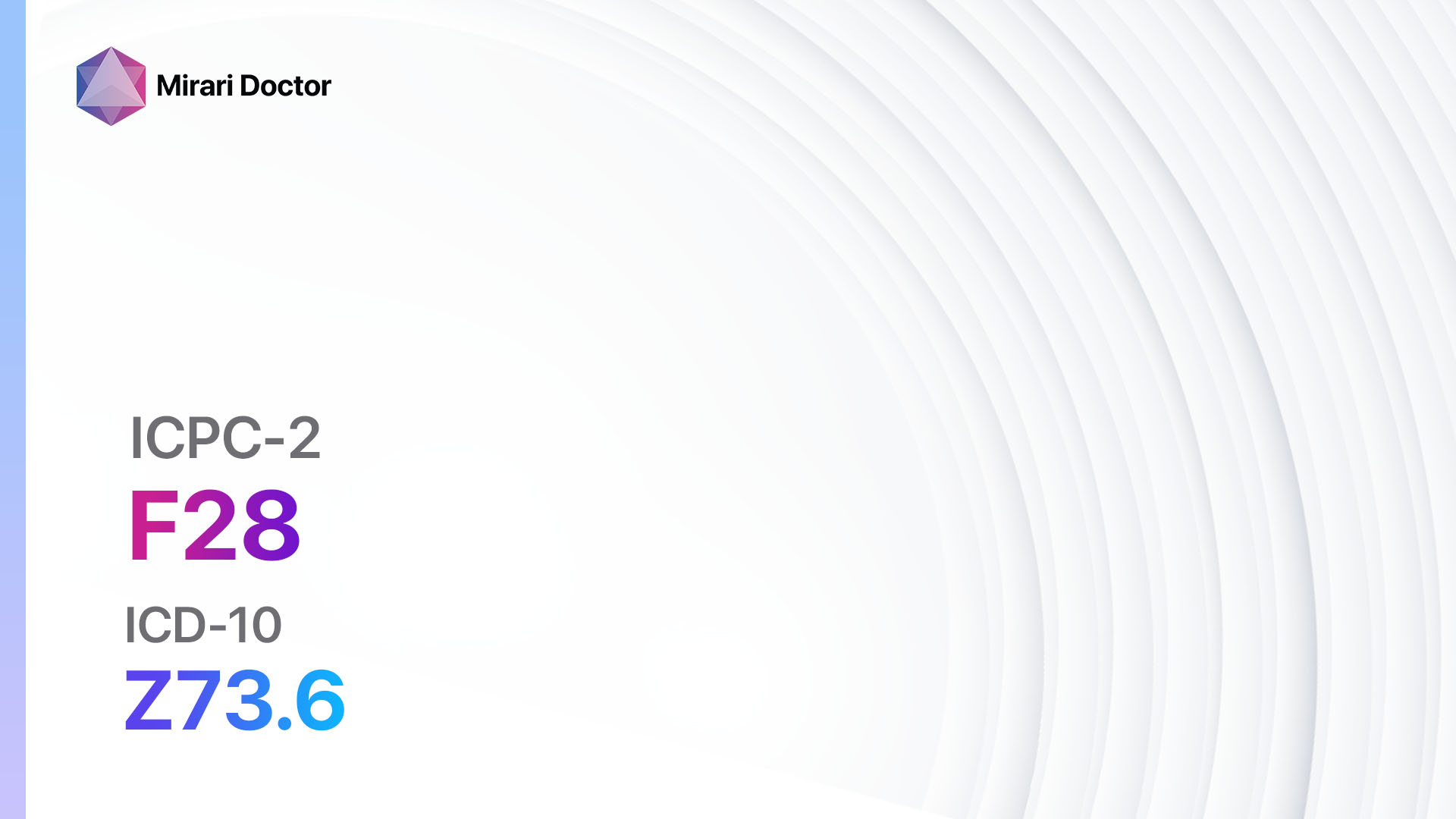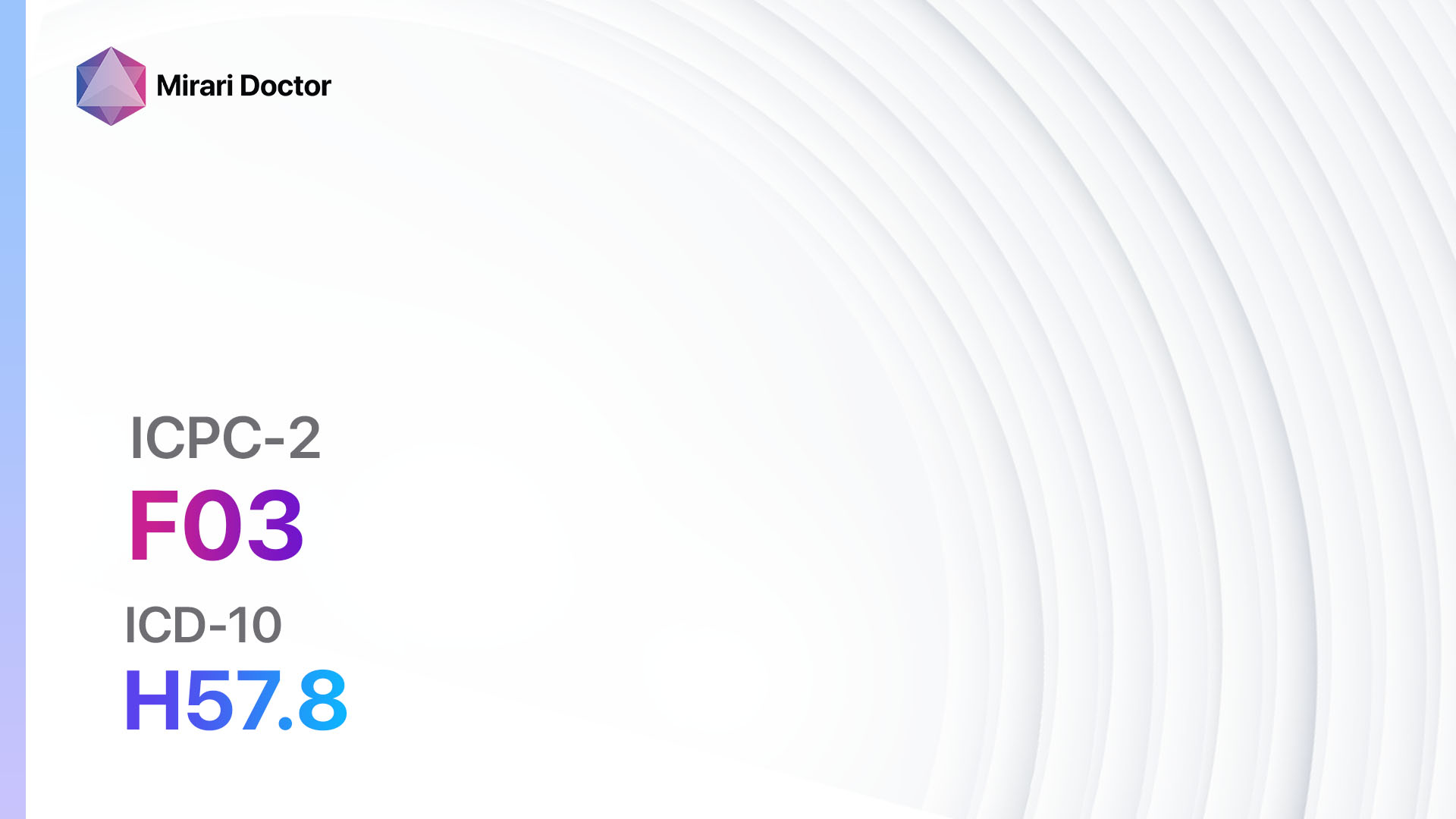
Introduction
Eye discharge, also known as conjunctivitis or pink eye, is a common condition characterized by the presence of discharge from the eyes. It can be caused by various factors, including infections, allergies, or irritants.[1] The aim of this guide is to provide a comprehensive overview of eye discharge, including its symptoms, causes, diagnostic steps, possible interventions, and patient education.
Codes
Symptoms
- Redness and inflammation of the eyes[4]
- Itching or burning sensation in the eyes[5]
- Watery or sticky discharge from the eyes[6]
- Crusting of the eyelids or lashes[7]
- Sensitivity to light[8]
- Blurred vision[9]
Causes
- Bacterial infection: Bacterial conjunctivitis is commonly caused by bacteria such as Staphylococcus aureus or Streptococcus pneumoniae.[10]
- Viral infection: Viral conjunctivitis is often associated with respiratory infections and can be caused by viruses such as adenovirus or herpes simplex virus.
- Allergic reaction: Allergic conjunctivitis can be triggered by allergens such as pollen, dust mites, or pet dander.
- Irritants: Exposure to irritants such as smoke, chemicals, or foreign bodies can cause eye irritation and discharge.
- Dry eyes: Insufficient tear production or poor tear quality can lead to dry eyes and subsequent discharge.
Diagnostic Steps
Medical History
- Gather information about the onset and duration of symptoms.
- Inquire about any recent exposure to irritants or allergens.
- Ask about any history of eye infections or allergies.
- Assess for any underlying medical conditions or medications that may contribute to eye discharge.
Physical Examination
- Inspect the eyes for redness, swelling, or discharge.
- Evaluate the eyelids and lashes for crusting or inflammation.
- Assess visual acuity and perform a basic eye examination.
- Check for any signs of infection or inflammation in the surrounding areas.
Laboratory Tests
- Conjunctival swab: A swab of the conjunctiva may be taken to identify the presence of bacteria or viruses.
- Allergy testing: If allergic conjunctivitis is suspected, allergy testing may be performed to identify specific allergens.
Diagnostic Imaging
- Diagnostic imaging is typically not necessary for the diagnosis of eye discharge. However, in certain cases, imaging modalities such as ultrasound or MRI may be used to evaluate the underlying structures of the eye.
Other Tests
- Schirmer’s test: This test measures tear production and can help determine if dry eyes are contributing to the eye discharge.
- Fluorescein staining: This test involves the use of a special dye to detect any corneal abrasions or ulcers.
Follow-up and Patient Education
- Provide appropriate treatment based on the underlying cause of the eye discharge.
- Instruct the patient on proper eye hygiene, including regular handwashing and avoiding touching or rubbing the eyes.
- Educate the patient about the importance of completing the full course of prescribed medications.
- Advise the patient to avoid sharing personal items such as towels or eye makeup to prevent the spread of infection.
- Schedule a follow-up appointment to monitor the progress of treatment and address any concerns or complications.
Possible Interventions
Traditional Interventions
Medications:
Top 5 drugs for Eye Discharge:
- Antibiotic eye drops (e.g., Tobramycin, Ciprofloxacin):
- Cost: $10-$50 per bottle.
- Contraindications: Hypersensitivity to the medication.
- Side effects: Temporary stinging or burning sensation in the eyes.
- Severe side effects: Allergic reactions, eye irritation or redness.
- Drug interactions: None reported.
- Warning: Use as directed and complete the full course of treatment.
- Antihistamine eye drops (e.g., Olopatadine, Ketotifen):
- Cost: $15-$40 per bottle.
- Contraindications: Hypersensitivity to the medication.
- Side effects: Temporary stinging or burning sensation in the eyes.
- Severe side effects: Allergic reactions, eye irritation or redness.
- Drug interactions: None reported.
- Warning: Use as directed and avoid contact lens use during treatment.
- Artificial tears (e.g., Systane, Refresh):
- Cost: $5-$20 per bottle.
- Contraindications: Hypersensitivity to the medication.
- Side effects: None reported.
- Severe side effects: None reported.
- Drug interactions: None reported.
- Warning: Use as needed for relief of dry eyes.
- Steroid eye drops (e.g., Prednisolone, Dexamethasone):
- Cost: $10-$50 per bottle.
- Contraindications: Active eye infections, glaucoma.
- Side effects: Temporary stinging or burning sensation in the eyes.
- Severe side effects: Increased eye pressure, cataract formation.
- Drug interactions: None reported.
- Warning: Use under the supervision of an ophthalmologist.
- Mast cell stabilizers (e.g., Cromolyn sodium, Nedocromil):
- Cost: $10-$30 per bottle.
- Contraindications: Hypersensitivity to the medication.
- Side effects: Temporary stinging or burning sensation in the eyes.
- Severe side effects: Allergic reactions, eye irritation or redness.
- Drug interactions: None reported.
- Warning: Use as directed and avoid contact lens use during treatment.
Surgical Procedures:
- Surgical intervention is typically not required for the treatment of eye discharge. However, in rare cases where there is an underlying structural abnormality or persistent infection, surgical procedures such as drainage of abscesses or removal of foreign bodies may be necessary.
Alternative Interventions
- Warm compress: Applying a warm compress to the eyes can help relieve symptoms and promote drainage of the discharge. Cost: Free.
- Saline rinses: Rinsing the eyes with saline solution can help flush out irritants and reduce discharge. Cost: $5-$10 per bottle.
- Herbal eye drops: Some herbal eye drops, such as chamomile or calendula, may have soothing effects on the eyes. Cost: $10-$20 per bottle.
- Cold cucumber slices: Placing cold cucumber slices on the eyes can help reduce inflammation and soothe the eyes. Cost: Free.
- Aloe vera gel: Applying aloe vera gel to the eyes can help reduce redness and inflammation. Cost: $5-$10 per tube.
Lifestyle Interventions
- Avoiding allergens: Identifying and avoiding allergens that trigger eye discharge, such as pollen or pet dander, can help reduce symptoms. Cost: Free.
- Proper eye hygiene: Practicing good eye hygiene, including regular handwashing and avoiding touching or rubbing the eyes, can help prevent eye infections and reduce discharge. Cost: Free.
- Using protective eyewear: Wearing protective eyewear, such as goggles, when exposed to irritants or during activities that may cause eye injury, can help prevent eye discharge. Cost: Varies depending on the type of eyewear.
- Maintaining a healthy lifestyle: Eating a balanced diet, getting regular exercise, and managing stress can contribute to overall eye health and reduce the risk of eye discharge. Cost: Varies depending on individual choices.
It is important to note that the cost ranges provided are approximate and may vary depending on the location and availability of the interventions.
Mirari Cold Plasma Alternative Intervention
Understanding Mirari Cold Plasma
- Safe and Non-Invasive Treatment: Mirari Cold Plasma is a safe and non-invasive treatment option for various skin conditions. It does not require incisions, minimizing the risk of scarring, bleeding, or tissue damage.
- Efficient Extraction of Foreign Bodies: Mirari Cold Plasma facilitates the removal of foreign bodies from the skin by degrading and dissociating organic matter, allowing easier access and extraction.
- Pain Reduction and Comfort: Mirari Cold Plasma has a local analgesic effect, providing pain relief during the treatment, making it more comfortable for the patient.
- Reduced Risk of Infection: Mirari Cold Plasma has antimicrobial properties, effectively killing bacteria and reducing the risk of infection.
- Accelerated Healing and Minimal Scarring: Mirari Cold Plasma stimulates wound healing and tissue regeneration, reducing healing time and minimizing the formation of scars.
Mirari Cold Plasma Prescription
Video instructions for using Mirari Cold Plasma Device – F03 Eye discharge (ICD-10:H57.8)
| Mild | Moderate | Severe |
| Mode setting: 1 (Infection) Location: 7 (Neuro system & ENT) Morning: 15 minutes, Evening: 15 minutes |
Mode setting: 1 (Infection) Location: 7 (Neuro system & ENT) Morning: 30 minutes, Lunch: 30 minutes, Evening: 30 minutes |
Mode setting: 1 (Infection) Location: 7 (Neuro system & ENT) Morning: 30 minutes, Lunch: 30 minutes, Evening: 30 minutes |
| Mode setting: 2 (Wound Healing) Location: 7 (Neuro system & ENT) Morning: 15 minutes, Evening: 15 minutes |
Mode setting: 2 (Wound Healing) Location: 7 (Neuro system & ENT) Morning: 30 minutes, Lunch: 30 minutes, Evening: 30 minutes |
Mode setting: 2 (Wound Healing) Location: 7 (Neuro system & ENT) Morning: 30 minutes, Lunch: 30 minutes, Evening: 30 minutes |
| Mode setting: 3 (Antiviral Therapy) Location: 3 (Kidney, Liver & Spleen) Morning: 15 minutes, Evening: 15 minutes |
Mode setting:3 (Antiviral Therapy) Location: 3 (Kidney, Liver & Spleen) Morning: 30 minutes, Lunch: 30 minutes, Evening: 30 minutes |
Mode setting: 3 (Antiviral Therapy) Location: 3 (Kidney, Liver & Spleen) Morning: 30 minutes, Lunch: 30 minutes, Evening: 30 minutes |
| Total Morning: 45 minutes approx. $7.50 USD, Evening: 45 minutes approx. $7.50 USD |
Total Morning: 90 minutes approx. $15 USD, Lunch: 90 minutes approx. $15 USD, Evening: 90 minutes approx. $15 USD, |
Total Morning: 90 minutes approx. $15 USD, Lunch: 90 minutes approx. $15 USD, Evening: 90 minutes approx. $15 USD, |
| Usual treatment for 7-60 days approx. $105 USD – $900 USD | Usual treatment for 6-8 weeks approx. $1,890 USD – $2,520 USD |
Usual treatment for 3-6 months approx. $4,050 USD – $8,100 USD
|
 |
|
Use the Mirari Cold Plasma device to treat Eye discharge effectively.
WARNING: MIRARI COLD PLASMA IS DESIGNED FOR THE HUMAN BODY WITHOUT ANY ARTIFICIAL OR THIRD PARTY PRODUCTS. USE OF OTHER PRODUCTS IN COMBINATION WITH MIRARI COLD PLASMA MAY CAUSE UNPREDICTABLE EFFECTS, HARM OR INJURY. PLEASE CONSULT A MEDICAL PROFESSIONAL BEFORE COMBINING ANY OTHER PRODUCTS WITH USE OF MIRARI.
Step 1: Cleanse the Skin
- Start by cleaning the affected area of the skin with a gentle cleanser or mild soap and water. Gently pat the area dry with a clean towel.
Step 2: Prepare the Mirari Cold Plasma device
- Ensure that the Mirari Cold Plasma device is fully charged or has fresh batteries as per the manufacturer’s instructions. Make sure the device is clean and in good working condition.
- Switch on the Mirari device using the power button or by following the specific instructions provided with the device.
- Some Mirari devices may have adjustable settings for intensity or treatment duration. Follow the manufacturer’s instructions to select the appropriate settings based on your needs and the recommended guidelines.
Step 3: Apply the Device
- Place the Mirari device in direct contact with the affected area of the skin. Gently glide or hold the device over the skin surface, ensuring even coverage of the area experiencing.
- Slowly move the Mirari device in a circular motion or follow a specific pattern as indicated in the user manual. This helps ensure thorough treatment coverage.
Step 4: Monitor and Assess:
- Keep track of your progress and evaluate the effectiveness of the Mirari device in managing your Eye discharge. If you have any concerns or notice any adverse reactions, consult with your health care professional.
Note
This guide is for informational purposes only and should not replace the advice of a medical professional. Always consult with your healthcare provider or a qualified medical professional for personal advice, diagnosis, or treatment. Do not solely rely on the information presented here for decisions about your health. Use of this information is at your own risk. The authors of this guide, nor any associated entities or platforms, are not responsible for any potential adverse effects or outcomes based on the content.
Mirari Cold Plasma System Disclaimer
- Purpose: The Mirari Cold Plasma System is a Class 2 medical device designed for use by trained healthcare professionals. It is registered for use in Thailand and Vietnam. It is not intended for use outside of these locations.
- Informational Use: The content and information provided with the device are for educational and informational purposes only. They are not a substitute for professional medical advice or care.
- Variable Outcomes: While the device is approved for specific uses, individual outcomes can differ. We do not assert or guarantee specific medical outcomes.
- Consultation: Prior to utilizing the device or making decisions based on its content, it is essential to consult with a Certified Mirari Tele-Therapist and your medical healthcare provider regarding specific protocols.
- Liability: By using this device, users are acknowledging and accepting all potential risks. Neither the manufacturer nor the distributor will be held accountable for any adverse reactions, injuries, or damages stemming from its use.
- Geographical Availability: This device has received approval for designated purposes by the Thai and Vietnam FDA. As of now, outside of Thailand and Vietnam, the Mirari Cold Plasma System is not available for purchase or use.
References
- Cleveland Clinic. (2021). Eye Discharge (Eye Mucus): Causes, Types & Treatment. Retrieved from https://my.clevelandclinic.org/health/symptoms/eye-discharge
- RxReasoner. (n.d.). ICPC-2 Chapter: F Eye. Retrieved from https://www.rxreasoner.com/icpc2codes/F
- ICD10data.com. (2021). 2021 ICD-10-CM Diagnosis Code H57.8. Retrieved from https://www.icd10data.com/ICD10CM/Codes/H00-H59/H55-H57/H57-/H57.8
- American Academy of Ophthalmology. (2021). Conjunctivitis: What Is Pink Eye? Retrieved from https://www.aao.org/eye-health/diseases/pink-eye-conjunctivitis
- Mayo Clinic. (2021). Pink eye (conjunctivitis). Retrieved from https://www.mayoclinic.org/diseases-conditions/pink-eye/symptoms-causes/syc-20353391
- Centers for Disease Control and Prevention. (2021). Conjunctivitis (Pink Eye). Retrieved from https://www.cdc.gov/conjunctivitis/index.html
- American Optometric Association. (n.d.). Conjunctivitis (Pink Eye). Retrieved from https://www.aoa.org/healthy-eyes/eye-and-vision-conditions/conjunctivitis?sso=y
- National Eye Institute. (2019). Facts About Pink Eye. Retrieved from https://www.nei.nih.gov/learn-about-eye-health/eye-conditions-and-diseases/pink-eye-conjunctivitis
- Healthline. (2019). Pink Eye (Conjunctivitis): Symptoms, Causes, Treatments. Retrieved from https://www.healthline.com/health/pink-eye
- Azari, A. A., & Barney, N. P. (2013). Conjunctivitis: a systematic review of diagnosis and treatment. JAMA, 310(16), 1721-1729. https://doi.org/10.1001/jama.2013.280318
Related articles
Made in USA
